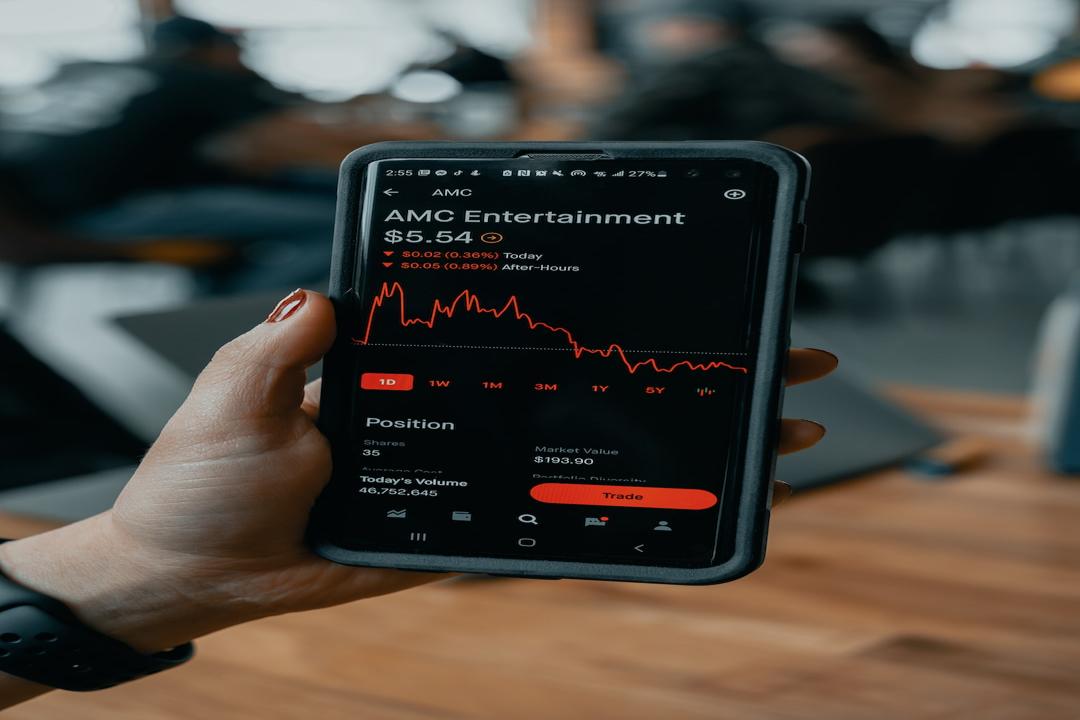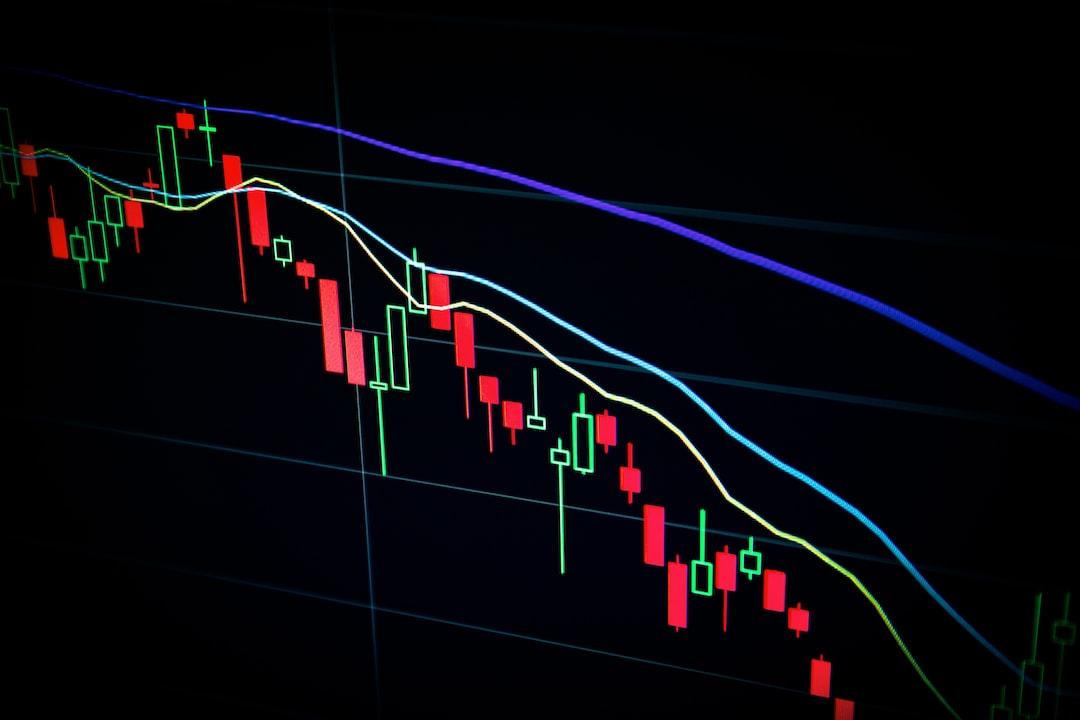Author:
Arthur Hayes, founder of BitMEX
Some people say:
“The cryptocurrency bull market has ended.”
“I need to launch my token now because we are in the downward phase of the bull market.”
“Why didn’t Bitcoin rise along with the large U.S. tech companies in the Nasdaq 100 Index?”

The comparison chart of the Nasdaq 100 Index (white) and Bitcoin (gold) shows that the two assets are moving in the same direction, but Bitcoin has stagnated after reaching a historic high earlier this year.
But the same people would say the following:
“The world is transitioning from a unipolar world order dominated by the United States to a multipolar world order that includes leaders like China, Brazil, and Russia.”
“To fund government deficits, depositors must be subjected to financial repression, and central banks must print more money.”
“The third world war has already begun, and war will lead to inflation.”
Some opinions about the current Bitcoin bull market phase and their views on geopolitics and global currency conditions confirm my point, that we are at a turning point – we are transitioning from one geopolitical and currency global arrangement to another. Although I don’t know which country will ultimately dominate and what the specific trade and financial structure will look like, I do know its general shape.
I want to step out from the current cryptocurrency capital market turmoil and focus on the broader cyclical trend we are in. I want to analyze the three major cycles from the Great Depression of the 1930s to the present. This will focus on the United States as the entire global economy is a derivative of imperial financial policy. Unlike Russia in 1917 and China in 1949, the United States did not undergo a political revolution as a result of the two world wars. Most importantly, for this analysis, the United States is relatively the best place to hold capital. It has the deepest stock and bond markets, as well as the largest consumer market. Whatever the United States does, the rest of the world emulates and reacts to, leading to relative outcomes that are better or worse compared to the flag on your passport. Therefore, understanding and predicting the next major cycle is very important.
There are two periods in history: local periods and global periods. In local periods, the government imposes financial repression on savers to fund past and present wars. In global periods, financial regulations are relaxed, and global trade is promoted. Local periods are periods of inflation, while global periods are periods of deflation. Any macro theorist you follow will have a similar classification of major periods in 20th-century and later historical periods.
The purpose of this history class is to make wise investments throughout the entire cycle. In a typical 80-year life expectancy, I’d better get more time because of the stem cells I inject; you can expect to go through an average of two major cycles. I categorize our investment choices into three categories:
– If you believe in the system but not the people managing the system, you invest in stonks.
– If you believe in the system and the people managing the system, you invest in government bonds.
– If you believe in neither the system nor the people managing the system, you invest in gold or other assets that do not require any residual existence of a nation, such as Bitcoin. Stocks are a legal fiction upheld by courts that can dispatch armed personnel to enforce. Therefore, stocks need a powerful state to exist and maintain value in the long run.
During a local inflation period, I should have gold and give up stocks and bonds.
During a global deflation period, I should hold stocks and give up gold and bonds.
Government bonds generally do not hold value long term unless I can leverage them at low or no cost indefinitely, or regulatory bodies force me to hold them. This is primarily because for politicians, printing money to fund their political objectives without resorting to unpopular direct taxation is too tempting.
Before describing the cycles of the last century, I want to describe a few key dates.
– On April 5, 1933, U.S. President Franklin Roosevelt signed an executive order banning private ownership of gold. He then devalued the dollar against gold from $20 to $35, breaking the U.S.’s commitment to the gold standard.
– On December 31, 1974, U.S. President Gerald Ford restored the right for Americans to privately own gold.
– In October 1979, Federal Reserve Chairman Paul Volcker changed U.S. monetary policy, targeting the quantity of credit rather than the level of interest rates. He then curbed inflation by limiting credit. In the third quarter of 1981, the yield on 10-year U.S. government bonds reached 15%, an all-time high, while bond prices reached an all-time low.
– On January 20, 1980, Ronald Reagan was sworn in as President of the United States. He then actively relaxed financial regulations. His other significant subsequent financial regulatory changes included making capital gains tax treatment of stock options more favorable and abolishing the Glass-Steagall Act.
– On November 25, 2008, the Federal Reserve began printing money under its Quantitative Easing (QE) program to address the global financial crisis triggered by subprime mortgage losses on financial institutions’ balance sheets.
– On January 3, 2009, Satoshi Nakamoto’s Bitcoin blockchain released the genesis block. I believe our savior and savior are here, rescuing humanity from the control of nations by creating a digital cryptocurrency that can compete with digital fiat currencies.
1933-1980 Pax Americana Ascendant Local Cycle
Compared to other countries, the U.S. emerged unscathed from the war. Given the personnel casualties and property damage in the U.S., World War II was less deadly and materially destructive than the U.S. Civil War of the 19th century. While Europe and Asia lay in ruins, U.S. industry rebuilt the world and reaped immense rewards.
Despite the smooth progression of the war for the U.S., it still needed to pay the price of the war through financial repression. Starting from 1933, the U.S. prohibited gold ownership. By the late 1940s, the Federal Reserve and the U.S. Treasury were merged, allowing the government to control the yield curve and enabling the government to borrow at rates below the market because the Fed printed money to buy bonds. To ensure savers couldn’t escape, a cap was set on bank deposit interest rates. The government used the saved marginal dollars to pay for World War II and the Cold War with the Soviet Union.
If gold and fixed income securities that at least pay interest at the inflation rate were outlawed, what could savers do to beat inflation? The stock market was the only way out.

From April 1, 1933, to December 30, 1974, the S&P 500 Index (white) compared to the Gold Index (gold) (100)
Even after President Nixon abolished the gold standard in 1971, gold rose, but the return on gold still did not exceed that of stocks.
But what happened when capital could once again freely gamble against the system and the government?

From December 31, 1974, to October 1, 1979, the S&P 500 Index (white) compared to the Gold Index (gold) (100)
During this time, gold outperformed stocks. I stopped comparing in October 1979 because Volcker announced that the Fed would drastically tighten credit, thereby restoring confidence in the dollar.
1980-2008 Peak of Pax Americana Global Cycle
With increased confidence that the U.S. could and would defeat the Soviet Union, the political winds changed. It was time to transition from a wartime economy and deregulate finance and other things, to let the markets rip.
Under the new petrodollar currency framework, the dollar was underpinned by the surplus from the sale of oil from oil-producing countries like Saudi Arabia. To maintain the purchasing power of the dollar, it was necessary to raise rates to suppress economic activity and subsequently suppress inflation. Volcker did just that, sending rates soaring and the economy tumbling.
The early 1980s marked the beginning of the next cycle, during which the U.S., as the only superpower, spread its wings in world trade, and the dollar strengthened due to monetary conservatism. As expected, gold did not perform well compared to stocks.

From October 1, 1979, to November 25, 2008, the S&P 500 Index (white) compared to the Gold Index (gold) (100)
Apart from bombing some Middle Eastern countries back to the Stone Age, the U.S. has not faced any war with an equally matched or nearly matched military. Even after the U.S. squandered over $10 trillion, fighting and losing against cavemen in Afghanistan, guerrilla insurgents in Syria, and insurgents in Iraq, people’s confidence in the system and the government did not waver. After Jesus seized glory with sword and axe a millennium ago, the truth became widely acknowledged.The main protagonist is once again causing serious damage to the United States. Since 2008, the United States has experienced a contrast between the American consensus and the medieval cycle.
Facing another economic collapse due to deflation, the American consensus once again defaults and devalues. This time, the Federal Reserve did not ban private ownership of gold and then devalue the dollar relative to gold, but instead decided to print money and buy government bonds, which they call quantitative easing. In both cases, the amount of credit based on the dollar expanded rapidly in an attempt to “save” the economy.
Proxy wars between major political groups have once again erupted. An important turning point was the 2008 Russian invasion of Georgia, which was a response to NATO’s intention to have Georgia join the organization. For the Russian elites, led by President Putin, preventing NATO, which possesses nuclear weapons, from advancing and surrounding Russia has always been a top priority.
Currently, there is fierce proxy warfare between the West (the American consensus and its satellites) and the Eurasian continent (Russia, China, and Iran) in Ukraine and the Levant (Israel, Jordan, Syria, and Lebanon). Any of these conflicts could escalate into a nuclear war between the two sides. In order to cope with what appears to be an unstoppable march towards war, countries are turning inward and ensuring that all aspects of their national economies are prepared to support war.
From an analytical perspective, this means that savers will be required to provide funding for the country’s wartime expenditures. They will be suppressed economically. The banking system will allocate the majority of credit according to the country’s directives to achieve certain political goals.
The American consensus once again defaults on the dollar to prevent a deflationary depression similar to the Great Depression of the 1930s. Subsequently, the United States has implemented protectionist barriers, just like it did from the 1930s to the 1940s. All nation-states are acting in their own self-interest, which can only mean experiencing severe inflation while undergoing financial repression.
From November 25, 2008, to the present, the S&P 500 Index (white) compared to gold (gold) and Bitcoin (green) has an index of 100.
This time, with the devaluation of the dollar by the Federal Reserve, capital can freely exit the system. The problem is that at the start of the current cycle, Bitcoin provided another form of stateless currency. The main difference between Bitcoin and gold, as Lynn Alden puts it, is that Bitcoin’s ledger is maintained through encrypted blockchain, allowing for currency to flow at the speed of light. In contrast, gold’s ledger is maintained by nature itself, and its movement speed is only comparable to the actual transfer of gold by humans. Compared to digital fiat currency that can be infinitely printed by governments and move at the speed of light, Bitcoin has an advantage, while gold falls short. This is why Bitcoin has somewhat stolen the spotlight from gold from 2009 to the present.
Bitcoin has outperformed gold to such an extent that you can’t see the difference in returns between gold and stocks on this chart. Therefore, gold’s performance has lagged behind stocks by nearly 300%.
The end of quantitative easing.
Although I believe my analysis of the background and description of the past 100 years of financial history is incredible, it doesn’t eliminate concerns about the end of the current bull market. We know that we are in a period of inflation, and Bitcoin has already done what it should do: outperform stocks and fiat currency devaluation. However, timing is everything. If you bought Bitcoin at recent historical highs, you might feel like a beta version cuckold because you are projecting past results onto an uncertain future. That being said, if we believe that inflation will continue, and war (whether it’s a cold war, hot war, or proxy war) is imminent, what does the past tell us about the future?
Governments have consistently suppressed domestic savers to fund wars and support winners of past cycles and maintain system stability. In this modern era of nation-states and large integrated commercial banking systems, the primary way the government provides funding for itself and critical industries is by dictating how banks allocate credit.
The problem with quantitative easing is that the market will allocate free money and credit to businesses that do not produce the actual products needed for a wartime economy. The American consensus is a prime example of this phenomenon. Volcker ushered in the era of an all-powerful central bank. Central bankers create bank reserves by purchasing bonds, thereby lowering costs and increasing credit limits.
In the private capital market, credit is allocated to maximize shareholder returns. The easiest way to increase stock prices is through share buybacks to reduce float. Companies that can access cheap credit will borrow money to buy back stocks. They will not borrow money to increase production capacity or improve technology. Improving business in hopes of generating more revenue is challenging and is not guaranteed to stimulate stock prices. But mathematically, reducing float can increase stock prices. Since 2008, large-cap companies that have obtained large amounts of cheap credit have done just that.
Another easily achievable goal is to increase profit margins. Therefore, companies have not used stock prices to build new capacity or invest in better technology, but rather have reduced labor costs by shifting jobs to China and other low-cost countries. The U.S. manufacturing sector has become so fragile that it cannot produce enough ammunition to respond to Russia’s fighting in Ukraine. Additionally, China has a clear advantage in manufacturing goods to the point where the U.S. Department of Defense’s supply chain is filled with critical components produced by Chinese companies, most of which are state-owned enterprises. Quantitative easing, combined with shareholder-centric capitalism, has made the U.S. military “giants” dependent on their “strategic competitors” (in their words, not mine), China. This is truly ironic!
The American consensus and the Western collective’s way of allocating credit will be similar to that of China, Japan, and South Korea. Either the government directly instructs banks to loan to this or that industry/company, or banks are forced to purchase government bonds at yields lower than the market, allowing the government to issue subsidies and tax breaks to the “right” companies. In either case, the return on capital or savings will be lower than nominal growth and inflation. Assuming capital controls are not implemented, the only way out is to buy value stores outside of the system, such as Bitcoin.
For those obsessed with observing changes in central bank balance sheets and thinking that credit growth is not sufficient to drive cryptocurrency prices higher again, you now have to be obsessed with observing the total amount of credit created by commercial banks. Banks achieve this by lending to non-financial corporations. Fiscal deficits also generate credit because deficits must be funded by borrowing on the sovereign debt market, and banks dutifully purchase this debt.
In short, in past cycles, we monitored the size of central bank balance sheets. In this current cycle, we must monitor fiscal deficits and total non-financial bank credit.
Trading strategy:
Why am I confident that Bitcoin will regain its magic? Why am I confident that we are in a new localized, nation-state-centric inflationary cycle?
Take a look at this information: According to a federal agency’s forecast, the U.S. budget deficit is expected to soar to $19.15 trillion in the 2024 fiscal year, exceeding last year’s $16.95 trillion and reaching the highest level outside the COVID-19 era. The agency attributes the 27% increase in its earlier forecast to increased spending.
For those worried that “Slow” Biden won’t keep the economy running with more spending until the election, this is the answer.
The Atlanta Fed predicts a staggering +2.7% actual GDP growth in the third quarter of 2024.
For those worried that the American consensus will fall into a recession, it is mathematically very difficult to experience a recession when the government is spending $2 trillion beyond tax revenue. This is equivalent to 7.3% of GDP in 2023. As a comparison, U.S. GDP declined by 0.1% in 2008 and 2.5% during the global financial crisis in 2009. Even if there were another global financial crisis similar to the last one this year, the decline in private sector economic growth would still not exceed the amount of government spending. There will be no recession. This does not mean that a large number of ordinary people will not suffer serious financial difficulties, but the American consensus will continue to move forward.
I point this out because I believe that fiscal and monetary conditions are loose and will continue to be loose. Therefore, holding cryptocurrencies is the best way to preserve value. I am convinced that the current situation is similar to the cycles from the 1930s to the 1970s, which means that since I can still freely convert from fiat currency to cryptocurrencies, I should do so because devaluation caused by the expansion and centralized distribution of credit through the banking system is imminent.
Original article link: [Link]
This article is authorized to be reprinted by Deep Tide TechFlow.

